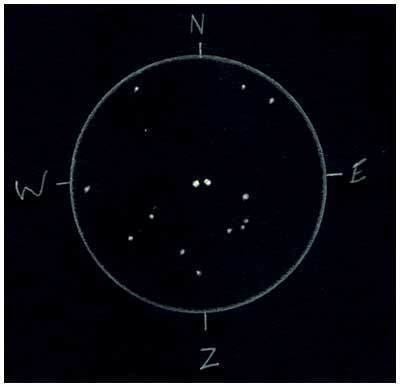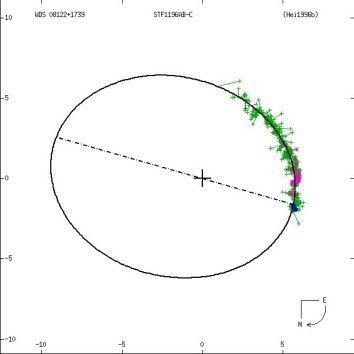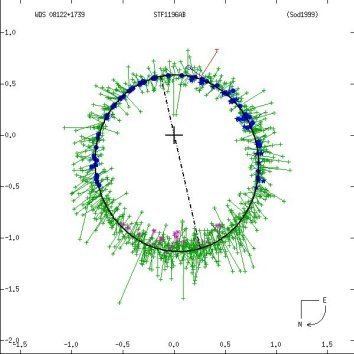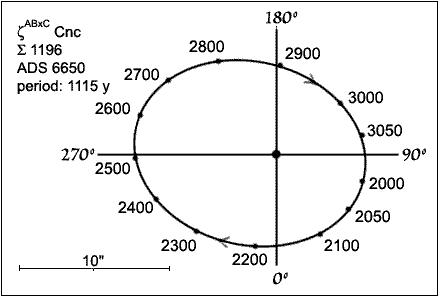Magnitude 4.67 Apparent magnitude (V) 4.67 | ||
 | ||
Similar Gamma Cancri, Iota Cancri, Delta Cancri, Alpha Cancri, Beta Cancri | ||
Zeta Cancri (ζ Cancri, abbreviated Zeta Cnc, ζ Cnc) is a multiple star system in the constellation of Cancer. It contains at least four stars in two binary pairs, designated Zeta¹ and Zeta² Cancri. The two components of Zeta¹ CnC are themselves designated Zeta Cancri A (also named Tegmine) and Zeta Cancri B, whilst those of Zeta² Cnc are designated Zeta Cancri C and Zeta Cancri D.
Contents

Zeta Cancri is approximately 83.4 light years from Earth, and has a combined apparent magnitude of +4.67. Since it is near the ecliptic, it can be occulted by the Moon and, very rarely, by planets.

Nomenclature

ζ Cancri (Latinised to Zeta Cancri) is the system's Bayer designation and ζ¹ Cancri and ζ² Cancri those of its two binary components. Considerable confusion had developed concerning the catalogue identities of the three bright stars; correct correspondences were worked out by Griffin:

Zeta Cancri bore the traditional name Tegmine (Tegmen) "the shell (of the crab)". In 2016, the International Astronomical Union organized a Working Group on Star Names (WGSN) to catalogue and standardize proper names for stars. The WGSN approved the name Tegmine for Zeta Cancri A on 12 September 2016 and it is now so entered in the IAU Catalog of Star Names.

In Chinese, 水位 (Shuǐ Wèi), meaning Water Level, refers to an asterism consisting of Zeta Cancri, 6 Canis Minoris, 11 Canis Minoris and 8 Cancri. Consequently, Zeta Cancri itself is known as 水位四 (Shuǐ Wèi sì, English: the Fourth Star of Water Level.)
Properties
Zeta Cancri can be resolved as a binary star in small telescopes. Its binary nature was discovered in 1756 by Johann Tobias Mayer. William Herschel resolved the two components that make up Zeta¹ Cancri in 1781. As early as 1831, John Herschel noticed perturbations in Zeta² Cancri's orbit around Zeta¹; this led Otto Wilhelm von Struve, in 1871, to postulate a fourth, unseen, component which orbited closely the visible member of Zeta². Later observations have resolved this fourth component and have indicated that there may be one or two more unobserved components.
Zeta¹ and Zeta² Cancri are 5.06 arcseconds apart. These two binary star systems orbit around their common centre of mass once every 1100 years. The radius is about 6.80.
Zeta¹ Cancri
The components are both yellow-white main sequence dwarfs of spectral class F. The apparent magnitudes of A and B are +5.58 and +5.99, respectively. They are separated, as of 2008, by 1 arcsecond, requiring a large telescope to resolve them, but this separation will increase until the year 2020. They complete one orbit every 59.6 years. The estimated masses for the pair are 1.28 and 1.18 solar masses, respectively.
Zeta² Cancri
Zeta Cancri C is the brighter of the two components, having an apparent magnitude of +6.12. It appears to be a yellow G-type star, often reported as G5V, but now thought to be earlier, probably G0V. This star has around 1.15 solar masses. The tenth magnitude Zeta Cancri D has the color of a red dwarf, and may in fact be a close pair of two red dwarfs. The separation between C and D is approximately 0.3 arcseconds, and their orbital period is 17 years.
